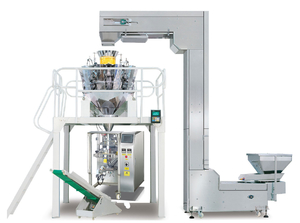How Cigarette Packaging Materials Influence Consumer Perception
Cigarette packaging plays a crucial role in shaping consumer perception and influencing purchasing decisions. Beyond serving as a container for tobacco products, the materials used in cigarette packaging can evoke specific emotions, attitudes, and expectations. This article aims to delve into the secrets behind how cigarette packaging materials influence consumer perception. By understanding these underlying factors, stakeholders in the tobacco industry can make informed decisions regarding packaging design and its potential impact on consumer behavior.
The Power of Visual Appeal
The visual appeal of cigarette packaging is a significant factor in consumer perception. Different packaging materials can convey various messages and create distinct impressions. For example, glossy and vibrant packaging materials may be associated with a sense of sophistication, while matte or textured materials can evoke a perception of authenticity or naturalness. The choice of colors, patterns, and imagery on the packaging also plays a pivotal role in shaping consumer perception, as they can convey brand identity, product attributes, and even societal values.
Associations with Quality and Prestige
Packaging materials can influence consumer perception of the quality and prestige of cigarette brands. Sturdy and premium materials, such as high-quality cardboard or metal, can create a perception of luxury and exclusivity. Conversely, flimsy or generic packaging materials may be associated with lower-quality products. Consumers often associate premium packaging materials with a higher price point and, consequently, perceive the enclosed cigarettes as more desirable, refined, or superior in taste and experience.
Health and Safety Considerations
In recent years, there has been a growing awareness of the health risks associated with smoking. Cigarette packaging materials can also influence consumer perception regarding health and safety. Packaging materials that convey messages of caution or health warnings may prompt smokers to consider the risks more seriously. Additionally, the use of packaging materials that imply a reduced harm or low-risk product, such as biodegradable or eco-friendly materials, can appeal to health-conscious consumers. This perception might influence their decision to choose a particular brand or product variant.
Emotional and Behavioral Triggers
Packaging materials can evoke specific emotions and trigger certain behaviors among consumers. The tactile qualities of the packaging, such as smoothness, roughness, or softness, can create subconscious associations that influence consumer preferences. For example, a smooth and sleek Packaging material may elicit a sense of comfort or sophistication, while a rough or textured material might evoke a feeling of ruggedness or authenticity. Additionally, packaging materials that are easy to open or carry may enhance convenience and encourage repeat purchases.
What Is the Importance of Cigarette Packaging?
Cigarette packaging serves multiple important functions in the tobacco industry. Here are some key reasons why cigarette packaging is important:
- Brand Identity and Differentiation
Packaging plays a crucial role in establishing and maintaining a brand's identity. It serves as a visual representation of the brand, conveying its values, personality, and image. Unique and recognizable packaging can help differentiate a brand from its competitors and create a sense of loyalty among consumers. Strong brand identity through packaging can contribute to long-term success in a competitive market.
- Communication and Information
Packaging provides a platform for communicating important information to consumers. It typically includes health warnings, ingredient lists, and other mandated disclosures to ensure transparency and promote consumer awareness. Packaging can also convey additional product information such as product variants, product characteristics, and manufacturing details. Clear and informative packaging enables consumers to make more informed decisions about their smoking choices.
- Consumer Attraction and Engagement
The design and aesthetics of cigarette packaging can significantly impact consumer attraction and engagement. Eye-catching and visually appealing packaging can capture the attention of potential customers and entice them to explore the product further. Creative packaging designs, colors, and imagery can evoke emotions, create a sense of desire, and establish a connection with the target audience. Packaging that engages consumers can increase brand recognition and recall.
- Product Protection and Safety
Packaging plays a practical role in protecting cigarettes from damage, moisture, and contamination. It ensures that the product remains fresh, intact, and of high quality until it reaches the consumer. Packaging materials and design should meet safety standards to minimize the risk of accidental ignition and ensure that the product is safely stored and transported. Proper packaging safeguards the integrity and safety of the product.
- Regulatory Compliance
Cigarette packaging must comply with various legal and regulatory requirements. Governments enforce regulations to address public health concerns, restrict misleading or deceptive packaging, and promote awareness of the risks associated with smoking. Packaging must adhere to specific guidelines regarding health warnings, font sizes, and other visual elements to ensure compliance with these regulations.
- Social Responsibility
The packaging of cigarettes also reflects a company's social responsibility and commitment to public health. Responsible packaging practices involve minimizing the potential for attractiveness to non-smokers, preventing the targeting of vulnerable populations, and ensuring that health warnings are prominent and effective. Companies have an ethical obligation to prioritize consumer safety and to act in accordance with societal expectations regarding tobacco use.
Cigarette packaging plays a pivotal role in branding, communication, consumer engagement, product protection, regulatory compliance, and social responsibility. It influences consumer perception, facilitates informed decision-making, and contributes to the overall smoking experience. However, it is important to balance these considerations with the need to address public health concerns associated with smoking.
Conclusion
Cigarette packaging materials possess a remarkable ability to shape consumer perception and influence their purchasing decisions. The visual appeal, associations with quality and prestige, health and safety considerations, as well as emotional and behavioral triggers, all play significant roles in the impact of packaging materials on consumer perception. Understanding these dynamics is crucial for stakeholders in the tobacco industry who seek to differentiate their products, build brand loyalty, or address public health concerns. By carefully selecting and designing packaging materials, companies can strategically influence consumer perceptions and ultimately shape the market landscape. However, it is essential to consider the ethical and health implications of such strategies, promoting responsible marketing practices and prioritizing the well-being of consumers.








